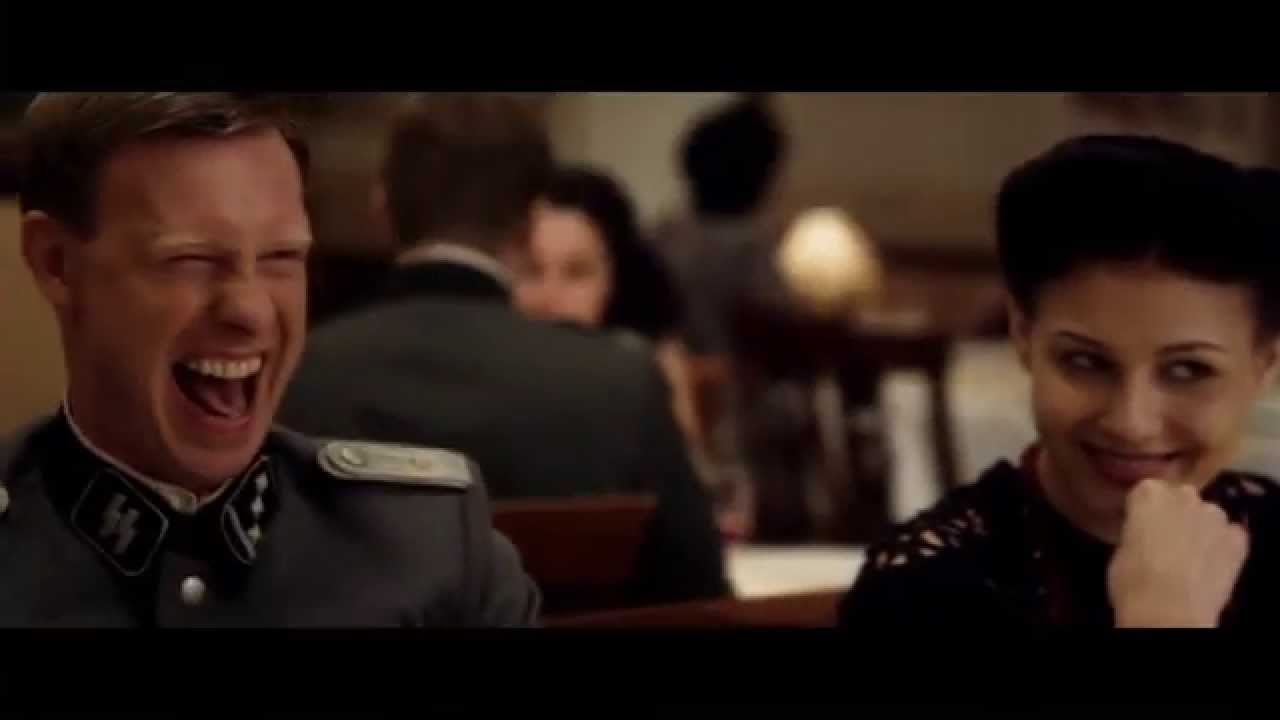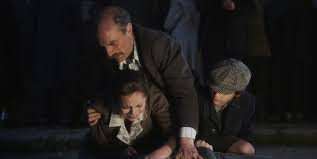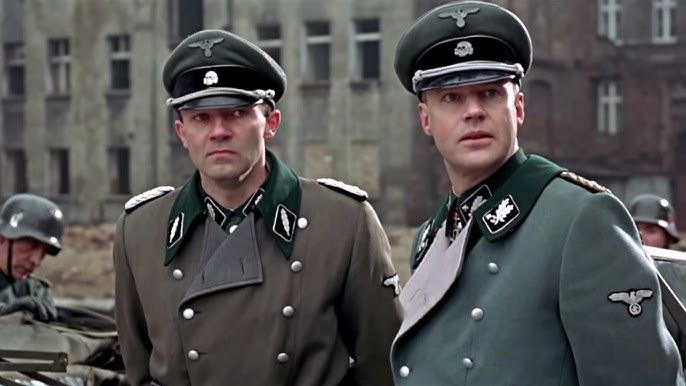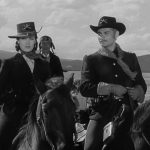🎬 Walking with the Enemy (2014)

Walking with the Enemy (2014) Movie Review: A Gripping Tale of Love and Survival During WWII
Introduction: A True Story of Courage in the Face of Adversity
Walking with the Enemy (2014), directed by Mark Schmidt, is a compelling historical drama set against the backdrop of World War II. Based on a true story, the film follows the harrowing journey of a young Jewish man who risks everything to save his family and others during the Nazi occupation of Hungary. The movie masterfully blends themes of love, sacrifice, survival, and the moral complexities faced by individuals during times of war. With powerful performances, an evocative score, and meticulous attention to historical detail, Walking with the Enemy offers a heart-wrenching yet inspiring portrayal of the human spirit’s resilience in the darkest of times.
Plot Summary: A Young Man’s Quest to Protect His Family
The story of Walking with the Enemy revolves around a young Jewish man, Elek Cohen, portrayed by Jonas Armstrong. Elek, a Hungarian university student, is separated from his family as Nazi forces sweep across Europe, taking control of Hungary during World War II. Separated from his father and mother, Elek is forced to navigate the dangers of living under Nazi occupation, all while trying to ensure the safety of those he loves.
When Elek’s family is sent to a labor camp, he embarks on a desperate mission to rescue them. In an act of ingenuity and bravery, Elek uses his appearance to his advantage, infiltrating the enemy ranks. He assumes the identity of a Nazi officer, a dangerous game that places him in close proximity to high-ranking Nazi officials while simultaneously allowing him to help save the lives of his fellow Jews.
Along the way, Elek forms a complicated bond with a young woman named Eva (Hannah Tointon), who becomes a source of strength and support in his perilous journey. As Elek navigates the intricacies of subterfuge and deception, he is confronted with moral dilemmas, forced to make difficult choices between love, duty, and the survival of those around him.
The film poignantly explores Elek’s inner turmoil as he faces the emotional toll of his actions, weighed down by the lives he holds in his hands. His efforts to protect his family and fellow Jews are both heart-wrenching and inspiring, as the dangers of being discovered by the Nazis loom over him at every turn.
Character Development: Strength in the Face of Horror
One of the most powerful aspects of Walking with the Enemy is its focus on character development. Elek Cohen’s transformation from a naïve student to a courageous and resourceful hero forms the emotional core of the film. Played with great sensitivity by Jonas Armstrong, Elek’s journey is a testament to the resilience of the human spirit. The film does an excellent job of showing the internal struggle Elek faces as he grapples with the moral ambiguity of his decisions. Each choice he makes, from assuming the identity of a Nazi officer to infiltrating dangerous circles, is fraught with ethical considerations, as Elek must reconcile his desire to protect his loved ones with the cost of his actions.
Eva, played by Hannah Tointon, is another well-developed character who adds depth to the story. As Elek’s confidante and love interest, Eva provides emotional support and acts as a counterbalance to Elek’s internal conflict. Her strength and compassion are evident as she, too, navigates the dangers of living under Nazi occupation. The chemistry between the two characters is palpable, and their growing bond adds an emotional layer to the film, highlighting the possibility of love and humanity even amidst the darkest circumstances.
Supporting characters, including fellow Jews and resistance fighters, also contribute to the film’s exploration of human resilience. These characters are not mere background figures; each one plays a crucial role in advancing the plot and deepening the emotional stakes. From Elek’s friends who help him in his mission to the suffering citizens of Hungary, the film presents a wide range of individuals affected by the war, each displaying strength in the face of terror.
Cinematography: A Visual Feast Amidst the Darkness of War
The cinematography of Walking with the Enemy is both striking and evocative, capturing the tension and desperation of wartime Europe. Shot by acclaimed cinematographer Kris Kaczor, the film makes effective use of its historical setting to create an immersive and believable world. The streets of Budapest are recreated with painstaking attention to detail, evoking the atmosphere of a city occupied by foreign forces, where fear and oppression hang in the air.
The film’s visuals are characterized by muted colors and a sense of bleakness, reflecting the grim reality of the time. However, moments of lightness and hope are skillfully portrayed through natural light and soft cinematography, underscoring the enduring strength of the human spirit even in the midst of suffering. The use of shadows and dim lighting during the darker scenes adds to the film’s sense of tension, making the viewer feel the constant threat the characters face.
The battle scenes, while not as numerous as in other war films, are shot with intense realism. The moments of violence and combat are rendered without glorification, showcasing the horror of war without sensationalizing it. The stark contrast between the peaceful moments of the characters’ lives and the brutality of war highlights the loss of innocence and the fragility of life during wartime.
The scenes in which Elek interacts with high-ranking Nazi officers are particularly tense, as the camera lingers on his face, capturing the fear and resolve he feels while operating in enemy territory. The cinematography amplifies the psychological tension, drawing the audience into Elek’s world of deception and danger.
Historical Accuracy: Honoring the True Story
Walking with the Enemy is based on a true story, and the film does an admirable job of staying faithful to the historical events surrounding the Nazi occupation of Hungary and the efforts of the Hungarian resistance. The film is careful to show the horrors of the Holocaust and the devastating effects of Nazi occupation on the Jewish population. It does not shy away from depicting the violence and brutality of the era, but it also focuses on the stories of courage, defiance, and hope that emerged in the face of overwhelming adversity.
The character of Elek Cohen, though fictionalized to some extent, is inspired by the real-life experiences of many young Jews who found ways to resist Nazi occupation. The film emphasizes the extraordinary lengths to which people went to protect their families and loved ones, even when faced with death or imprisonment. While the specific details of Elek’s journey may be dramatized, the underlying themes of love, sacrifice, and survival remain true to the historical realities of the time.
The film also explores the political complexities of the era, showing the various factions within Hungary during the war. The Hungarian government, initially aligned with the Nazis, is depicted as a force of oppression, while the resistance movement is portrayed as a symbol of hope and defiance. The film does a commendable job of portraying the various aspects of life under occupation, from the everyday struggles of the Jewish population to the efforts of those who resisted the Nazi regime.
Themes: Survival, Sacrifice, and the Power of Humanity
At its heart, Walking with the Enemy is a film about survival and sacrifice. The film explores how individuals are forced to make difficult decisions in order to protect those they love, even if it means compromising their own morals. Elek’s journey is not just one of physical survival, but also of emotional and psychological endurance. The film delves into the moral complexities of wartime, where the lines between right and wrong are often blurred, and where survival sometimes requires making impossible choices.
The theme of love is another central element of the film. Despite the horrors of war, Elek’s relationship with Eva provides a glimmer of hope and humanity. Their love story is a poignant reminder that even in the darkest times, connections between people can still offer solace and strength. The film suggests that love, in all its forms, can be a powerful force against the brutality of war, helping individuals to find the courage to carry on.
Walking with the Enemy also highlights the importance of community and solidarity in the face of oppression. Elek’s mission to protect his family is not one he undertakes alone; he is supported by a network of individuals who share his desire to resist the Nazi regime. The film shows that, even in the most dire of circumstances, acts of kindness, bravery, and unity can make a difference.
Conclusion: A Riveting and Thought-Provoking War Drama
Walking with the Enemy (2014) is a powerful and emotional film that offers a fresh perspective on the experiences of those living under Nazi occupation during World War II. With strong performances, historical accuracy, and stunning cinematography, the film captures the intensity of the period while honoring the courage and sacrifice of those who lived through it. The story of Elek Cohen’s journey is a testament to the resilience of the human spirit, and the film leaves viewers with a profound understanding of the complexities of survival, love, and sacrifice during one of the darkest times in history.











